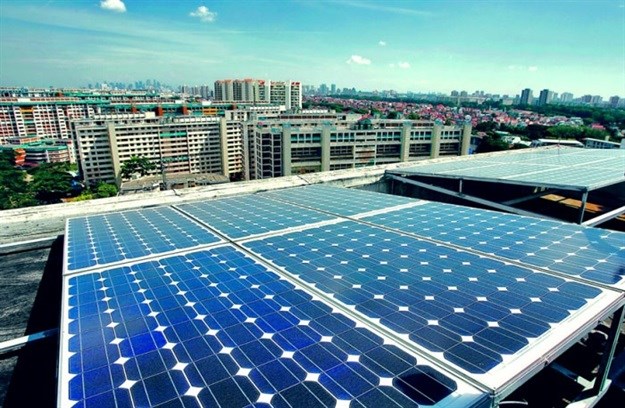A number of countries around the world have declared ambitions to reduce their carbon-generated power drastically, turning to the power of the sun as a clean alternative.
The government of India has recently unveiled a major stepping stone toward achieving its goal to produce 40% of its power from non-fossil fuels by 2030. It is a super solar power plant, officially the largest of its kind, situated in Kamuthi, Tamil Nadu.
The site covers an area of 10km2 and its solar panel field consists of 2.5-million individual solar panel units. It snatches the title of world’s largest solar energy plant from Topaz Solar Farm in California, USA.
The massive clean-energy undertaking was funded by Adani Group and cost approximately $679m. The site will allow India to generate about 648MW of additional electricity, powering roughly 150,000 homes with the sun’s energy. It is hoped that this solar power project will help the country combat its problem of bad air quality, as the capital city of New Delhi recently saw its worst levels of pollution in 17 years.
Similarly, Morocco’s largest solar power plant is situated on the edge of the Saharan desert. Though it is still under construction and will only be completed in 2018, the plant’s first wing has been activated and is already supplying the local town of Quarzazate with carbon-free power.
Once the entire site is running at full capacity, it is estimated that it will generate 580MW of power – saving Morocco hundreds of thousands of tonnes of carbon emissions each year and providing approximately 1.1-million Moroccans with sustainable power. The north African country’s government plans to have 42% of its entire power demand supplied by solar energy by 2020 and further 52% by the year 2030.
The island of Singapore has similar ambitious solar energy plans, but without the luxury of vast open deserts to build on. In fact, Singapore faces a major real estate problem and without natural infrastructure in the form of rivers to generate hydroelectricity from, engineers have had to ramp up their creativity to maintain a future vision of clean energy for the small island.
“Solar energy is the only source and option of renewable energy for Singapore,” says Thomas Reindl, deputy CEO of Solar Energy Research Institute of Singapore. “Other forms like hydroelectric power, wind turbines and geothermal energy are not feasible because the country lacks the space and natural infrastructure like a major river system.”
One of Singapore’s chief solutions is called ‘solar leasing’ which involves the use of rooftops as a spot to install solar panels without additional costs to whoever lives below, as Ronnie Tay, CEO of the National Environment Agency of Singapore, explains: “The solar leasing business model, which involves the sale of solar electricity to building owners rather than the sale of solar modules, has quickly gained ground in Singapore. This allows solar systems to be installed on building rooftops, without any upfront capital costs to the building owners. As a consequence, the base of solar adopters in Singapore is growing, and today includes many industrial and commercial players.”

























